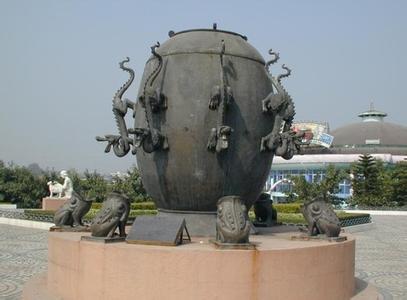 Since the earthquake in Sichuan, earthquakes have also been reported in many places. People can not help but enter a period of sadness, but colleagues also raise questions about why seismographs cannot predict earthquakes. In fact, seismographs cannot be used to predict earthquakes. Seismographs are only used to monitor the occurrence of earthquakes and record earthquakes. Data instrumentation.
Since the earthquake in Sichuan, earthquakes have also been reported in many places. People can not help but enter a period of sadness, but colleagues also raise questions about why seismographs cannot predict earthquakes. In fact, seismographs cannot be used to predict earthquakes. Seismographs are only used to monitor the occurrence of earthquakes and record earthquakes. Data instrumentation. From the history of the development of seismographs, the world’s first seismograph was invented by the Chinese scientist Zhang Heng in the Eastern Han Dynasty and was called the Meteorological Instrument. The wind and geotechnical apparatus is made of refined copper, with a diameter of eight feet and a shape similar to that of a wine bottle. There is a raised dome on the outside. The instrument is engraved with the texts of the 篆 script and mountains, turtles, birds, beasts, etc. There is a central part of the instrument. The "all pillars" of copper have eight channels beside the column, which are called "eight lanes, and there are clever machines and customs." There are eight faucets around the outside of the corpus callosum, arranged in eight directions: east, south, west, north, southeast, northeast, southwest, and northwest. The faucet is connected to the engine in the internal passage, and each faucet has a copper ball in its mouth. Facing the faucet, eight squatted on the ground, each one open his mouth openly, ready to accept the bronze ball. When an earthquake took place somewhere, the corpus callosum moved and it touched the organ, causing the leader in the direction of the earthquake to open his mouth, spit out the bronze ball, and fall into the mouth of the gong and make a loud noise. So people can know the direction of the earthquake.
As we all know, the main data of the earthquake include epicentral location, focal depth, and magnitude. Zhang Heng’s geomancy and seismograph can only be used to inform people about the general direction of the earthquake. Other data is still unknown. In modern times, seismographs have been able to compare seismic maps generated at different locations to determine the location of the epicenter. Rescue workers can reach the epicenter in the fastest time for rescue and relief. There are three types of modern seismographs: short-period seismographs, long-period seismographs, and ultra-long (wide-band) seismographs.
So, what is the principle of the seismograph? The seismograph is mainly to use the inertia of a suspended weight, and the ground vibrates when the earthquake occurs and it does not move. The vibration recorded by the seismograph is a curve with different fluctuation amplitudes, called the seismic spectrum. The undulating amplitude of the curve corresponds to the amplitude of the ground vibration caused by the seismic waves, which indicates the intensity of the earthquake. Seismic spectrum can clearly distinguish the effects of various types of seismic waves. The time difference between the longitudinal wave and the shear wave reaching the same seismic station, the instantaneous difference is proportional to the distance from the seismic station to the epicenter, and the farther away from the epicenter, the greater the time difference. From this law, we can find the distance from the epicenter to the epicenter, which is the epicentral distance. Therefore, seismographs can only be used to measure the intensity and direction of earthquakes and cannot be used to predict the occurrence of earthquakes.
Assured with good performance under safety working voltage and a series of sensors which inspect machine operations, the machine could provide all-side protection to the user. We use best materials to make all parts of the machine by ourselves to ensure the machine more stability, and R & D many technique patents to improve and guarantee machin accuracy. It's also easy operated, because we use industrial computer to do program editing and operation. Also the air blowers and dust collector can wipe off the dust of the work pieces.
Technical Parameters:
1. Weight: 1500kg
2. Planting method: Round wire
3. Production speed: 500 rpm
4. Planting peak: 65mm
5. Planting pore size: φ1.6-φ4.0
6. Storable procedures: 1000 models
7. X-axis travel: 400mm;
8. Y-axis travel: 320mm;
9. Z-axis travel: 160mm;
10. Air input pressure: 0.8MPa
11. Rated voltage frequency single phase: 220V, 50Hz
12. Machine power: 2.0kw
13. Machine dimensions: 1.14 meters long, 1.84 meters wide and 1.75 meters high
14. Packing size: 1.8 meters length, 2.1 meters width, 2.1 meters height (conforming to standard container requirements).
More details, please contact us as soon as possible.
5 Axes Drill And Tuft Brush Machine
Automatic Drilling and Tufting Brush Machinery,Broom Stick Making Machine,CNC Automatic Brush Making Machine,5 Axis CNC Tufting Machine
Yangzhou Blue State Digital Control Brush Equipment Co., LTD. , http://www.lbbrushmachine.com